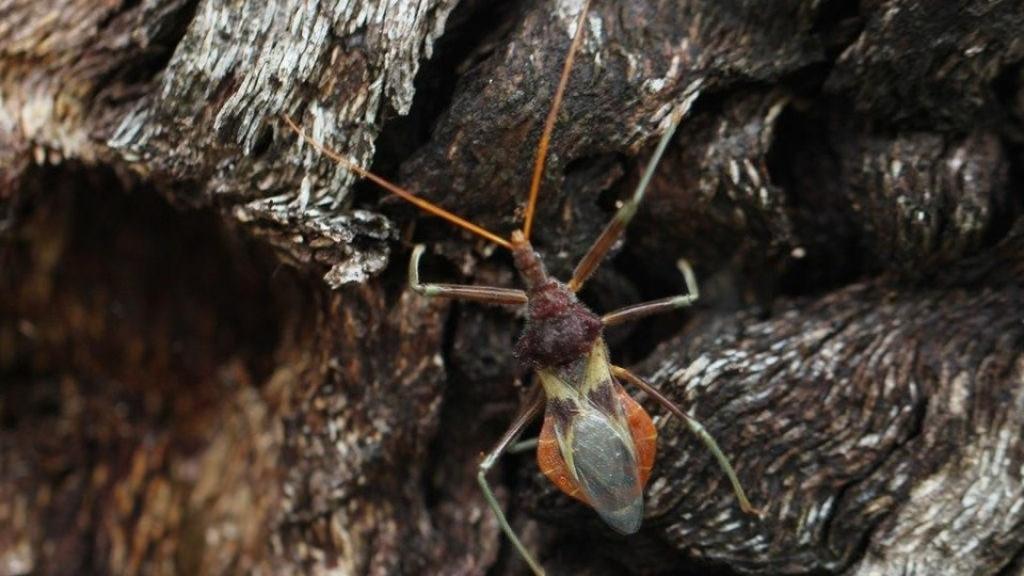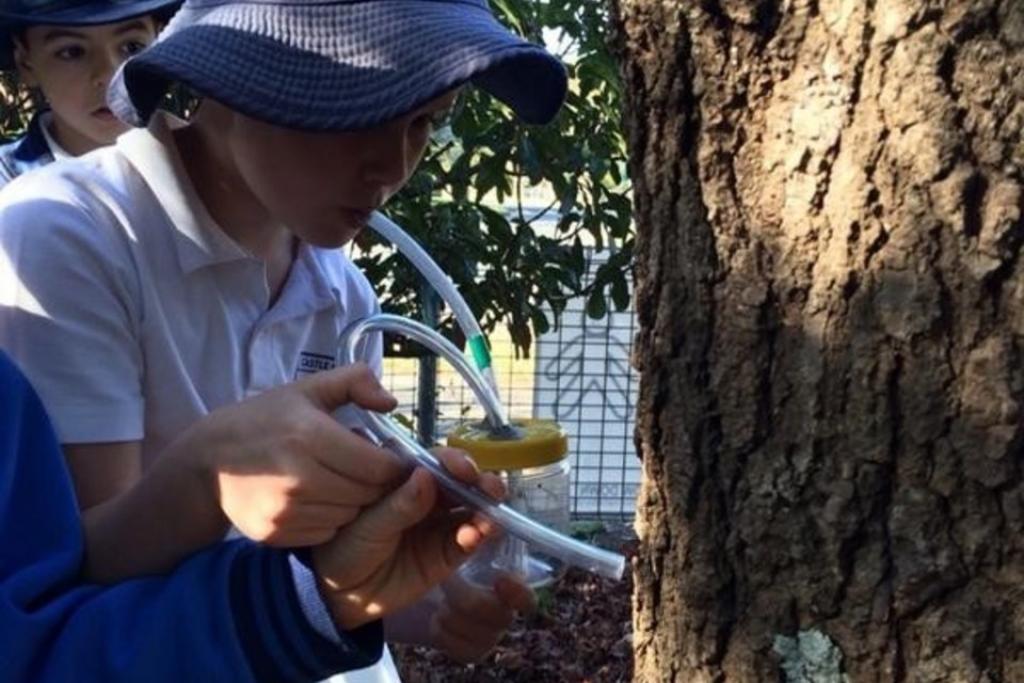Australian Biodiversity Adaptations
Case Study: Biodiversity and ICT
Teachers: Mrs Rao and Ms MacLeod
School description: Castle Cove Primary School is a public school of 490 students, situated in Sydney’s North Shore.
Curriculum objectives
During the course of a term, Years 5 and 6 undertook a plant and animal invertebrate survey, conducted on the oval and in the school garden. This activity formed part of a unit investigating biodiversity and adaptations and linked to the NSW Curriculum outcomes.
Teaching and learning process
In June 2014, the school’s specialist science teacher, Anjali Rao, was chosen to be one of five teachers from across Australia to participate in BushBlitz TeachLive, a national program coordinated by Earthwatch. BushBlitz is Australia's largest nature discovery project – a multi-million dollar partnership between the Australian Government, BHP Billiton Sustainable Communities and Earthwatch Australia, established to document plants and animals at selected properties across Australia. BushBlitz Teachlive gives teachers the opportunity to act as citizen scientists as well as to ‘teach live’ from the field. To amplify her experience in the Kimberley region of Western Australia, Anjali Rao created a blog to share with the Castle Cove students as she worked alongside the BushBlitz scientists.
Back in Sydney, Year 5 and 6 students (Stage 3) undertook a biodiversity survey of their school grounds. A parent at the school, Geoff Shuetrim, had developed a wonderful iPad application called Sydney Wildlife, which allowed the students to upload their sightings to the Atlas of Living Australia. The app also enabled the students to identify the animals as they found them. The unit of work in Science that term was linked to Anjali’s experiences in the Kimberley.
Students were able to:
- Participate in learning activities investigating adaptations in animals and plants
- Investigate the differences between habitats and weather in Castle Cove and the Kimberley region
- Conduct online research on iconic species of plants and animals from the Kimberley such as the Boab tree, Frilled dragon, Rock wallaby or Goanna.
This unit follows on from a Stage 2 (Year 3) unit of work investigating biodiversity, food webs and community interactions as well as threats facing biodiversity.
Outcomes
- Students linked their understanding to real world science and recognised that they contributed as citizen scientists.
- Students gained appreciation of the rich biodiversity in their school through the survey process.
- Students were highly engaged in the TeachLive field trip undertaken by their specialist science teacher.
- Their teacher reported that, “I took the whole school with me – via the website and daily posts” (link).
- Students initiated and undertook fundraisers with a biodiversity focus (Corroboree Frog 2014).
Reflections
Students thoroughly enjoyed the opportunity to explore surroundings that were seemingly so familiar to them and yet discover so much biodiversity when they looked closer and with attention. They were also excited by the feeling that they were contributing to a wider body of knowledge in the form of the Atlas of Living Australia. It is so important that students have a background understanding of the various levels of biodiversity as well as the importance and interconnectedness of every species in a system.
The Sydney Wildlife App provides a quick and easy way to identify species and link to the Atlas. If teachers don’t have access to mobile devices, records can also be submitted via their website.
Resources
App:
Sydney Wildlife https://itunes.apple.com/au/app/sydney-wildlife/id693889329?mt=8
Websites:
Atlas of Living Australia http://www.ala.org.au
Wildscreen Arkive www.arkive.org
Australian Birds http://birdlife.org.au
Plant and animal adaptations http://www.bbc.co.uk/nature/adaptations
Plant adaptations http://www.mbgnet.net/bioplants/adapt.html
NSW Field of Mars Environmental Education Centre http://fieldofmarseec.nsw.edu.au/ (resources and professional development)
Physical resources:
iPads
Aspirators or pooters for invertebrate collection https://en.wikipedia.org/wiki/Aspirator_(entomology)
Home-made collecting devices http://fieldofmarseec.nsw.edu.au/wp-content/uploads/2013/04/EarthAlive-Book-2013.pdf - pages 52–53
State frameworks
ST3-10LW describes how structural features and other adaptations of living things help them to survive in their environment
ST3-2VA demonstrates a willingness to engage responsibly with local, national and global issues relevant to their lives, and to shaping sustainable futures
ST3-11LW describes some physical conditions of the environment and how these affect the growth and survival of living things
STe-1VA shows interest in and enthusiasm for science and technology, responding to their curiosity, questions and perceived needs, wants and opportunities
STe-2VA demonstrates a willingness to engage responsibly with local, national and global issues relevant to their lives, and to shaping sustainable futures
STe-4WS explores their immediate surroundings by questioning, observing using their senses and communicating to share their observations and ideas

